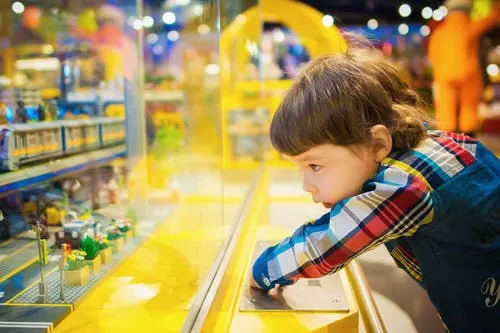In this article, we will explore Which Toys does your children likes?. By knowing their preferences, you can create a nurturing and stimulating environment for your little ones.
As parents, we always strive to provide the best for our children. One of the areas where we can make a significant impact on their development and happiness is through the choice of toys. Understanding which toys your children like is essential to ensure they engage in meaningful play and enjoy their playtime to the fullest.
The Importance of Choosing the Right Toys
Choosing the right toys for your children is crucial for their overall development. Toys not only entertain but also play a vital role in enhancing various skills, such as cognitive, physical, social, and emotional abilities. Well-selected toys can promote creativity, problem-solving, imagination, and critical thinking in children.
They can also help improve their motor skills, hand-eye coordination, and language development. By understanding your children’s toy preferences, you can ensure that they receive the maximum benefits from their playtime.
Outdoor Toys
Bicycles: A Classic Choice for Active Play
Bicycles have always been a favorite among children, providing them with a sense of independence and freedom. Riding a bicycle not only promotes physical activity but also improves balance, coordination, and strength.
Consider choosing a bicycle that is age-appropriate and equipped with safety features such as training wheels, helmets, and elbow/knee pads. Encourage your children to ride their bicycles in safe areas, such as parks or designated bike paths.
Swings: Soaring through the Air
Swings are a timeless outdoor toy that children of all ages enjoy. Whether it’s a classic swing set in the backyard or a park swing, children love the exhilaration of soaring through the air. Swinging helps develop a sense of balance, coordination, and spatial awareness.
It also provides sensory stimulation and a feeling of freedom. Ensure that the swing set is securely installed and meets safety standards to prevent any accidents.
Soccer Ball: A World of Fun and Teamwork
Playing soccer not only keeps children physically active but also teaches them valuable life skills such as teamwork, communication, and cooperation.
Get your children involved in soccer games or encourage them to kick the ball around in the backyard. Playing soccer helps improve agility, motor skills, and cardiovascular health. It also fosters a sense of camaraderie and sportsmanship.
Sand and Water Play: Sensory Delights
Children love exploring the textures of sand and water, making sandboxes and water tables a great addition to any outdoor play area. Sand and water play provide numerous sensory benefits and stimulate creativity and imagination. Building sandcastles, digging, pouring, and splashing water offer endless opportunities for open-ended play. Ensure proper supervision and maintain hygiene while engaging in sand and water play.
Indoor Toys
Building Blocks: Building a Foundation for Learning
Building blocks are excellent toys for stimulating creativity, problem-solving, and fine motor skills in children. They allow children to explore spatial relationships, balance, and construction principles. Encourage your children to build structures using different shapes and sizes of blocks.
Building block sets often come with instruction booklets to inspire creativity and provide guidance. Join in the fun and build together with your children, fostering a sense of collaboration and accomplishment.
Puzzles: Unlocking the Mind
Puzzles are fantastic toys for developing cognitive skills and problem-solving abilities in children. They come in various forms, including jigsaw puzzles, shape-sorting puzzles, and logic puzzles.
Puzzles engage children’s critical thinking and concentration while enhancing their hand-eye coordination and spatial awareness. Start with puzzles that match your child’s age and gradually increase the complexity as they grow and develop.
Arts and Crafts: Unleashing Creativity
Arts and crafts activities are a wonderful way to nurture your children’s creativity and imagination. Provide them with a variety of materials such as crayons, markers, colored pencils, paints, and clay.
Encourage them to explore different art techniques and express their thoughts and emotions through artistic endeavors. Arts and crafts help develop fine motor skills, hand-eye coordination, and self-expression.
Board Games: Fun and Learning Combined
Board games are not only a source of entertainment but also offer numerous learning opportunities for children. They promote social interaction, strategic thinking, decision-making, and patience. Choose age-appropriate board games that match your children’s interests and abilities. Engage in friendly competition and enjoy quality time together as a family.
FAQs
What if my child doesn’t seem interested in any specific toys?
It’s common for children to have varying interests and preferences when it comes to toys. Observe your child’s behavior and try to identify their interests outside of traditional toys. They may enjoy activities such as music, sports, or arts and crafts. Tailor their playtime to their unique interests and provide a variety of options for exploration.
How can I introduce educational toys without sacrificing fun?
Many educational toys are designed to be engaging and entertaining while promoting learning. Look for toys that incorporate elements of play, such as building blocks, puzzles, and interactive games. These toys can stimulate your child’s curiosity and imagination while imparting valuable knowledge and skills.
Should I limit my child’s access to electronic toys?
While electronic toys can have educational value, it’s essential to strike a balance. Limit the time spent on electronic devices and encourage a variety of play experiences, including outdoor activities, imaginative play, and hands-on learning. Create designated screen-free zones and set clear boundaries to ensure a well-rounded playtime.
Conclusion
Understanding which toys your children like is a valuable insight that can positively impact their growth and development. By providing a diverse range of toys that align with their interests and preferences, you can create an environment that fosters learning, creativity, and joy. Remember, the best toys are the ones that spark imagination, promote exploration, and encourage meaningful play. So, observe, engage, and delight in the wonder-filled world of toys with your children.
